The Pandemic Pushes New Appeals for Rural Broadband Investment Across Wisconsin
State and local efforts to expand equitable internet access across the state grow in priority as both education and the economy moved more online in the wake of the coronavirus.
March 5, 2021 • Northern Region
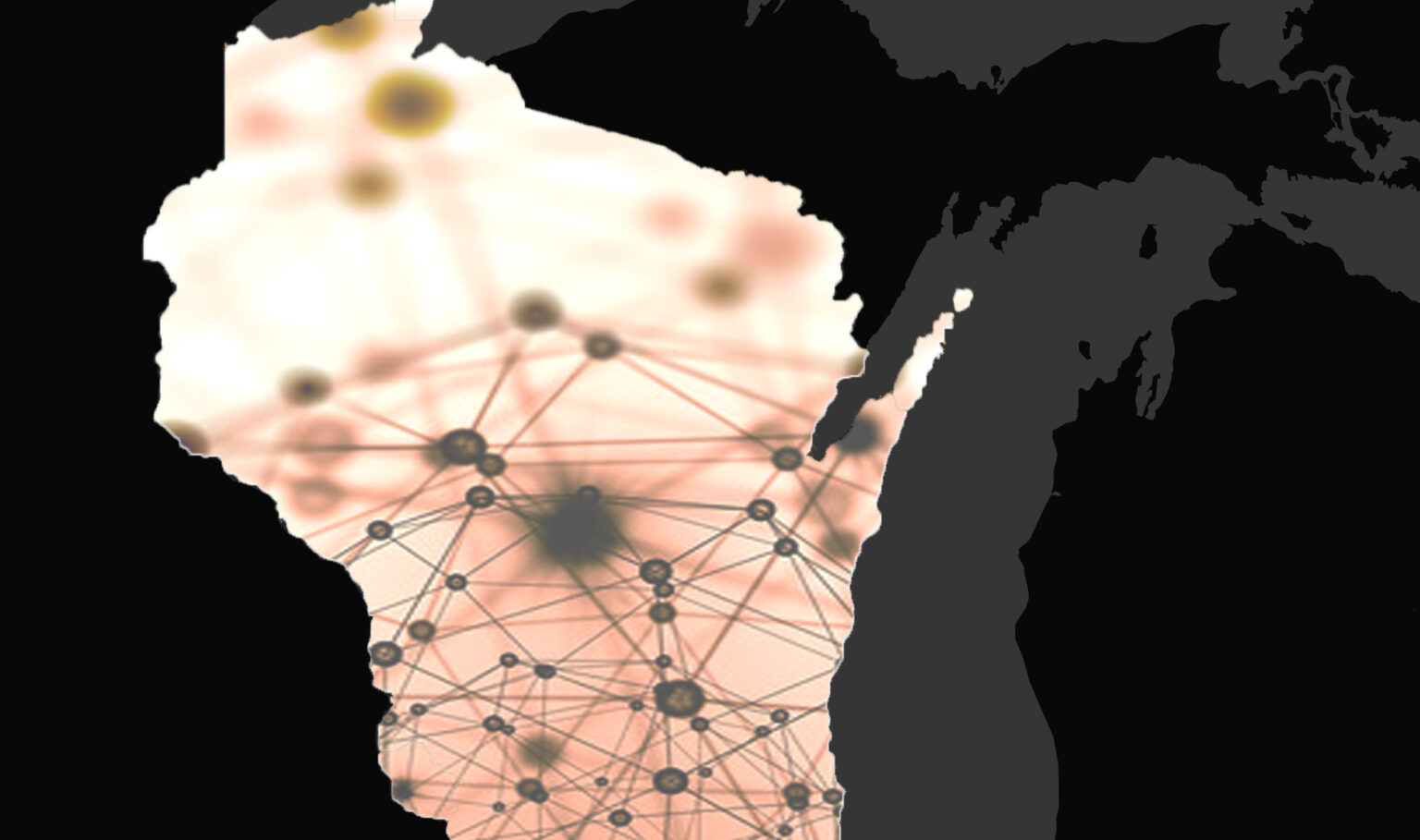
(Illustration by Marisa Wojcik)
As Wisconsinites pass the one-year mark of enduring a global pandemic, with lockdowns having long moved life to a virtual setting, it can be difficult to remember that there are still plenty of people who don’t have reliable internet access.
Gov. Tony Evers declared 2021 to be the “year of broadband access” in Wisconsin in his State of the State address.
“This pandemic has underscored, and in some ways exacerbated, the digital divide,” Evers said in his Feb. 16 speech.
A November 2020 report issued by Forward Analytics, examined Federal Communications Commission data for 2019 and found one quarter of the state’s rural population, or roughly 430,000 people, lack access to adequate internet speeds of at least 25 megabits per second.
K-12 schools are hit particularly hard, as many rural-set districts had to make do with whatever they had.
Near the ends of the Earth
“We’re not at the end of the Earth, but you can see it from here,” said Dr. Sara Croney, administrator of the School District of Maple.
For families in the small northwest Wisconsin community, she explained even those who do get service say it is slow and cannot accommodate more than one device using the internet at a time.
The distribution of internet service in this area outside Superior varies from household to household, according to Croney. Some families only get internet on their phones, some use a less expensive internet provider, CenturyLink, which she said offers unstable service. Meanwhile, Croney added, a more reliable provider, Norvado, is much more expensive.
Norvado was given $34 million from a 2009 federal stimulus package and completed a four-year process of installing optical fiber in communities along Wisconsin’s northern edge. This fiber infrastructure replaced much slower copper wires and brought high speed internet nearly 100 times faster, though the higher cost to customers in the area placed the service out of reach for some families.
Croney was able to secure a grant through T-Mobile to secure 48 hotspot devices provided to Maple families that qualify for free and reduced-price lunches. The device was free, but families still have to pay $15 per month for service.
The school district moved to a hybrid model of virtual and in-person learning after COVID-19 struck, but Croney worries that the virtual-learning students have fallen behind.
Even when the pandemic wanes and schools return to in-person classes, Maple schools are moving to a one-to-one learning model – meaning that every student will have a device such as a Chromebook and more learning will require adequate access to the internet.
Beyond that plan, Croney knows that the small community will require affordable broadband if it wants to attract and retain quality teachers, families, business and jobs.
“Our world is expecting online shopping, online education, online everything, even after COVID is done. I don’t see us needing less broadband access,” Croney said.
A public-private partnership brings broadband up north
In addition to educational benefits of expanded broadband access, the economic benefits were a driving force behind a public-private partnership in Florence County.
In 2017, before the pandemic hit, the northeastern Wisconsin county received a grant through the Public Service Commission to fund three towers that would expand broadband access.
In a public-private partnership, this $133,462 grant was half funded by state money and half supported by donations from local businesses and community partners. Installation of the three towers was completed in late 2019.
“When the pandemic came, we were in a good place compared with the rest of rural Wisconsin,” said Florence County District Administrator Ben Niehaus. “The efforts in broadband, this was done to benefit schools, but it was also economic.”
A June 2020 report from the Wisconsin Economic Development Corporation described expanding broadband access and equity as one of three critical priorities for economic recovery from the pandemic.
Niehaus said coverage around Florence County isn’t perfect and there are still a few households that are underserved, but for the most part the infrastructure is bringing high speed internet to many in the area.
K-12 schools feel broadband squeeze
An internet access map maintained by the Wisconsin Department of Public Instruction, known as DPI, shows where coverage does and does not exist, as well as speeds available at the district level. The distances within rural spaces around the state’s landscape make physically reaching some households difficult or simply not cost-effective.
That’s what happened to Julie Tiedens, a media educator for the School District of Black Rivers Falls. When the pandemic hit and everyone else went home, she still had to come into school to have fast enough internet to hold Zoom sessions with students.
Tiedens was hoping that funding from a Federal Communications Commission program called Connect America Fund Phase II would be enough incentive for a local service provider to connect homes with faster internet options in her west-central Wisconsin community. But years later, she is still relying on a DSL connection that is roughly the speed of dial-up access.
Not only does that limitation make it difficult for Tiedens to do her job remotely, but it does for her family as well. She was hoping her son could take guitar lessons online while stuck at home during the pandemic, as well as access telehealth care, both of which are next to impossible with low internet speeds.
As a media specialist, Tiedens has done her homework, researching new technologies as well as contacting her representative in Congress, U.S. Rep. Ron Kind, a Democrat, in hopes of getting more answers. The only reply she reports getting, though, is that the cost is still too high for the local provider to build out broadband infrastructure that reaches her home.
Ultimately, cost is the problem with the public-private model to date, according Kurt Kiefer, Assistant State Superintendent from the Division of Libraries and Technology at DPI.
PBS Wisconsin spoke with Kiefer about broadband access and education issues in a Noon Wednesday interview on March 3.
Broadband infrastructure is easier to build and payoff in densely populated areas and becomes more cost-prohibitive in the more rural, sparsely populated areas — but that doesn’t mean it’s impossible.
“It’s less affordable, but it’s still affordable if you think of it like a long-term investment,” Kiefer said.
“Fiber is going to be here for a long time,” he added. “There’s enough capacity and fiber to last us for another 50 years easily. If the funding matches that, in terms of a return-on-investment requirement, where you only need to get it paid back over the next 30, 40 or 50 years, well, then the investment is a lot easier to fight off. It’s changing the mindset about, how do you pay for this?”
Gov. Evers is looking to bring that long-term infrastructure to Wisconsin. In his 2021-23 budget, the governor’s administration allocated $200 million to broadband expansion.
“Extending broadband infrastructure and affordability will literally help connect folks in both rural and urban areas so they are better able to work from home, engage in telehealth, and access education at all levels,” states the’ budgetary language.
State data on student internet access is incomplete. Roughly 25,000 students don’t have adequate internet access, according to DPI survey results, either because it’s not possible for broadband to reach their home or the family cannot afford it.
The state’s patchwork of connectivity
Julie Tiedens is hoping answers are found in new technology, such as low latency satellites from Starlink. Another pilot program from the Evers administration will tether drones equipped with cellular service in northeast Wisconsin.
While these projects could be pieces to the puzzle, Kurt Kiefer calls them “niche” solutions and equates more long-term investments like laying fiber to building roads, fire stations, school buildings and sewage treatment plants in a community — because the internet isn’t a “want,” it’s a “need.”
Rick Folkedahl knows that all too well. As the director of IT for Monroe County in west-central Wisconsin, he needs the internet in order to do his job. He asked his service provider if they would optimize his connection, which bumped his 3 megabits per second connection up to 10 Mbps. However, that’s where it maxes out, as the connection is an old copper telephone.
With children in the house, the balance of internet usage becomes an arduous process.
“For my kids to do virtual school, our service is barely sufficient,” Folkedahl said. “We have run into problems when they need to post videos or larger items.”
Folkedahl said he usually ends up pulling out his cell phone and uses its data as a Wi-Fi hotspot in order to leave what little bandwidth is available to be used by the kids.
“The school tries to accommodate students by providing Wi-Fi near schools, but that would mean my wife would have to drive them back and forth to download school items.”
Folkedahl isn’t sure why his neighbors’ homes located half of a mile away have cable internet, but his home doesn’t. For now, he calls what they have “barely sufficient.”
For many, virtual schooling over the past year has sounded the alarm that Wisconsin has big internet gaps to fill and Kiefer sees the state’s ability to leverage funding as a good opportunity to step into more public-private partnerships.
“Do [schools] have to be the canary in the coal mine? I don’t think so. But do we encourage it? Yes, because they truly are the lifeblood of a lot of communities – any community, frankly, across the state,” said Kiefer.
 Passport
Passport




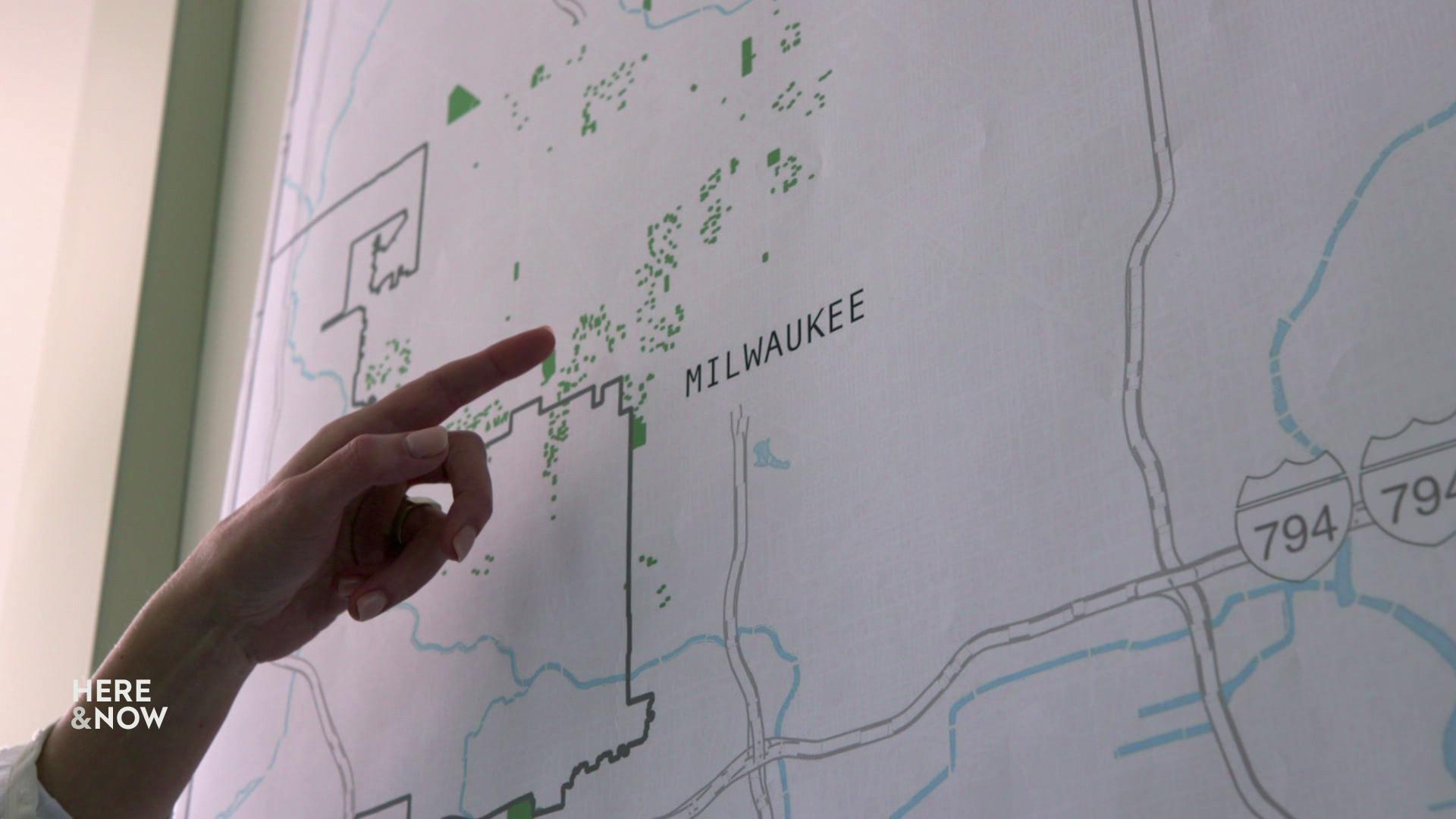
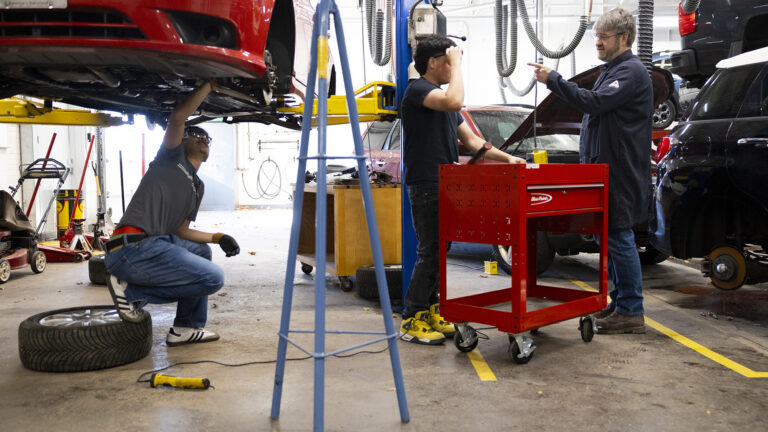
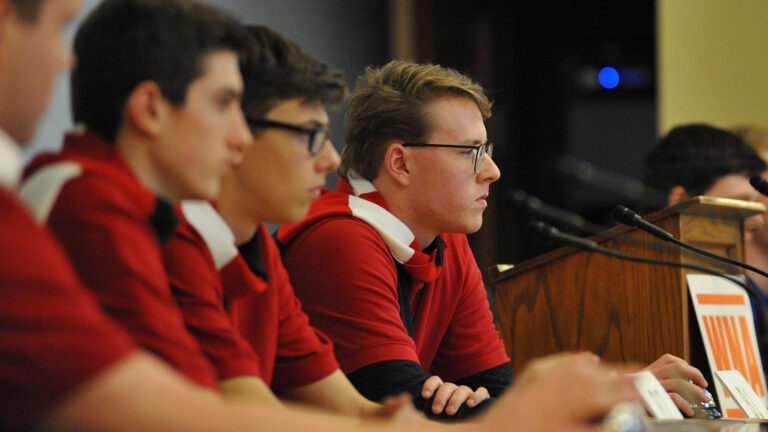
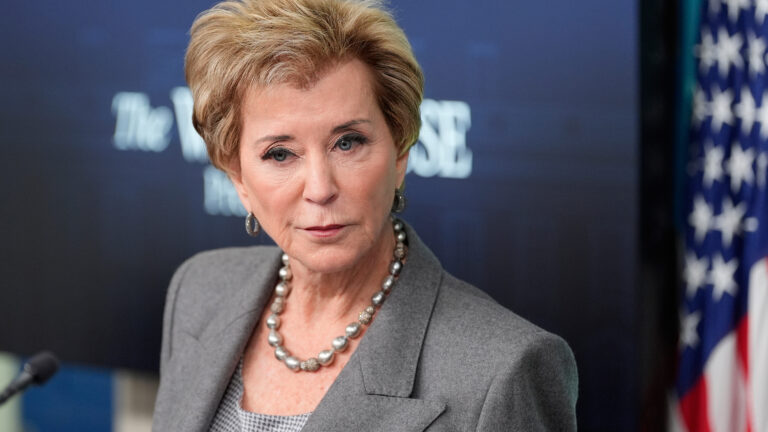
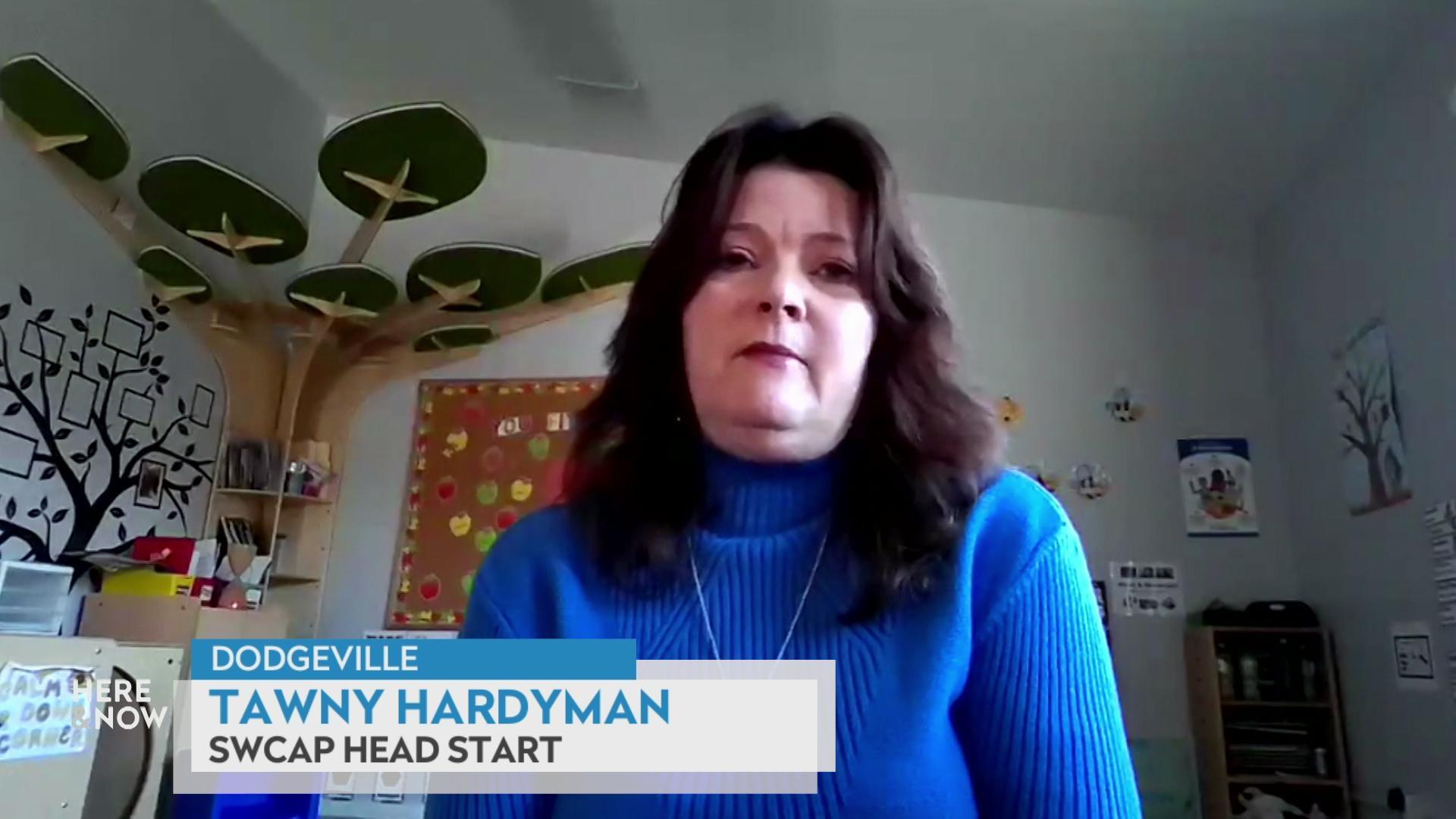


Follow Us